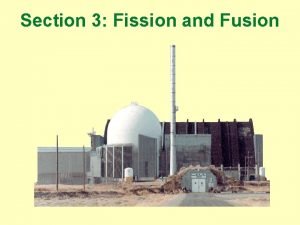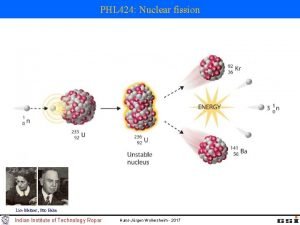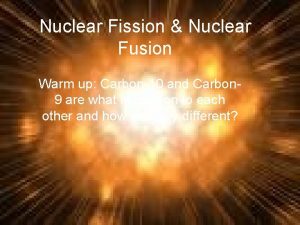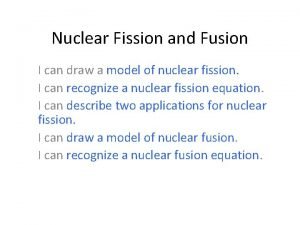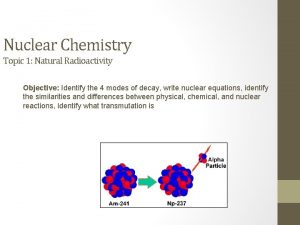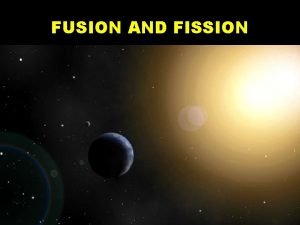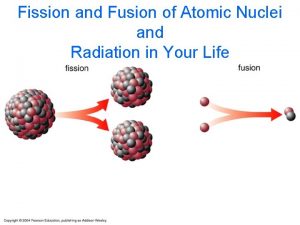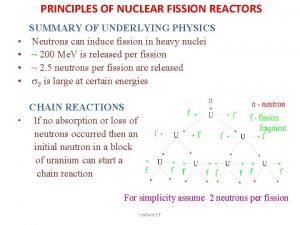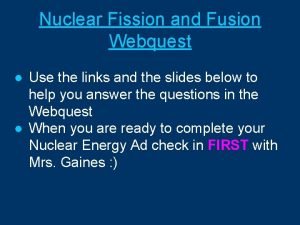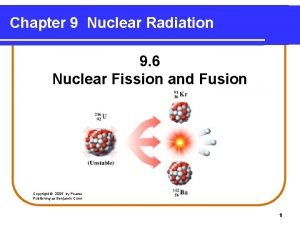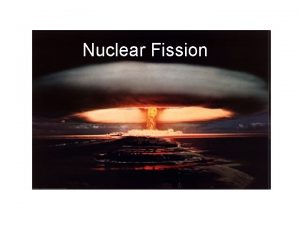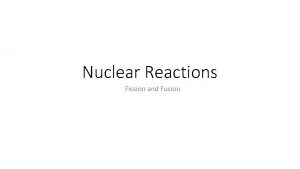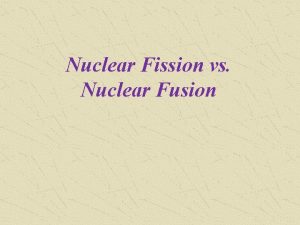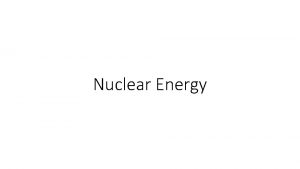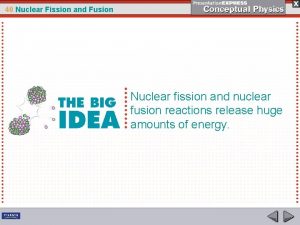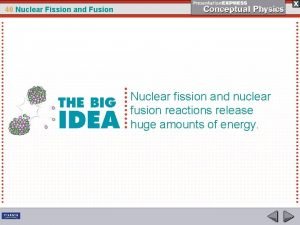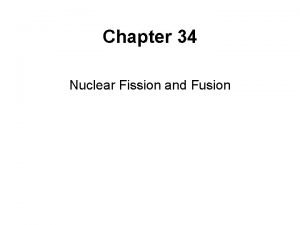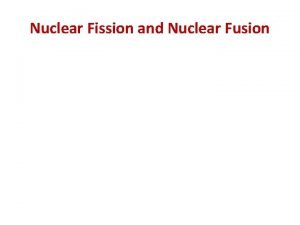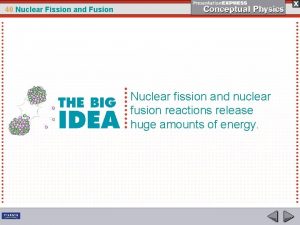Nuclear Energy Nuclear Fission Nuclear fission is the










- Slides: 10

Nuclear Energy

Nuclear Fission • Nuclear fission is the process of splitting a nucleus into two nuclei with smaller masses. • Fission means “to divide” • Remember that fission has 2 s’s, therefore it splits into TWO parts.

Fission cont. • Only large nuclei with atomic numbers above 90 can undergo fission. • Products of fission reaction usually include two or three individual neutrons, the total mass of the product is somewhat less than the mass of Uranium-235.

Chain Reaction • A chain reaction is an ongoing series of fission reactions. Billions of reactions occur each second in a chain reaction.

Chain Reaction cont. • On earth, nuclear fission reactions take place in nuclear reactors, which use controlled chain reactions to generate electricity.

Chain Reaction cont. • Uncontrolled chain reactions take place during the explosion of an atomic bomb.

Fission Products • The products of nuclear fission reactions are radioactive, but the energy released from these reactions is less harmful to the environment than the use of fossil fuels. • The products are intensely radioactive and must be treated and/or stored.

Nuclear Fusion • Nuclear fusion is the combining of two nuclei with low masses to form one nucleus of larger mass. • Nuclear fusion reactions are also called thermonuclear reactions.

Nuclear Fusion cont. • Fusion reactions exist in stars. • Our sun is a good example of a thermonuclear (fusion) reaction. • It is almost impossible to create fusion reactions on earth since they need temperatures above one million degrees Celsius in order to take place.

Nuclear Fusion cont. • Nuclear fusion produces less nuclear waste than nuclear fission and the materials are easier to obtain.

